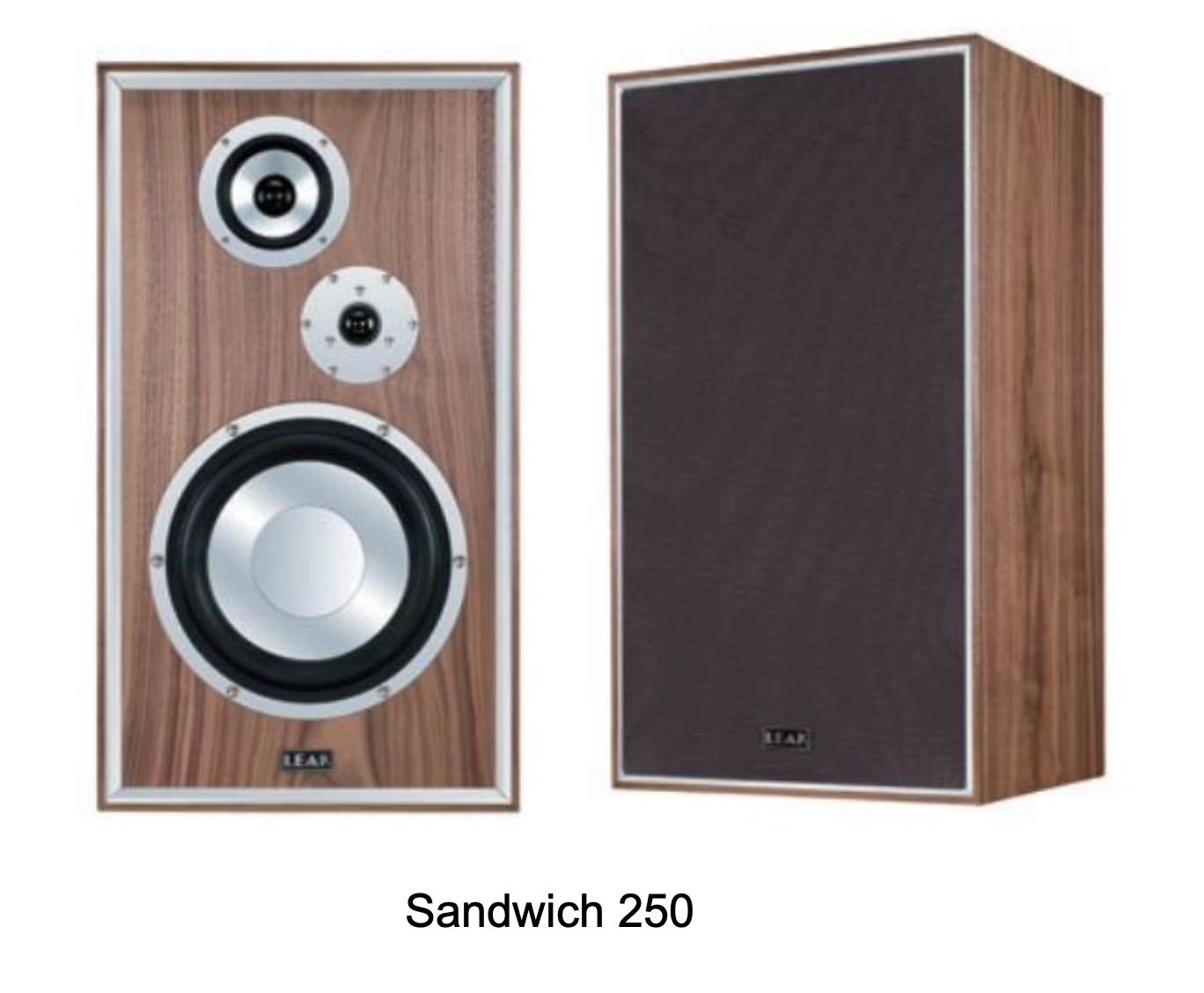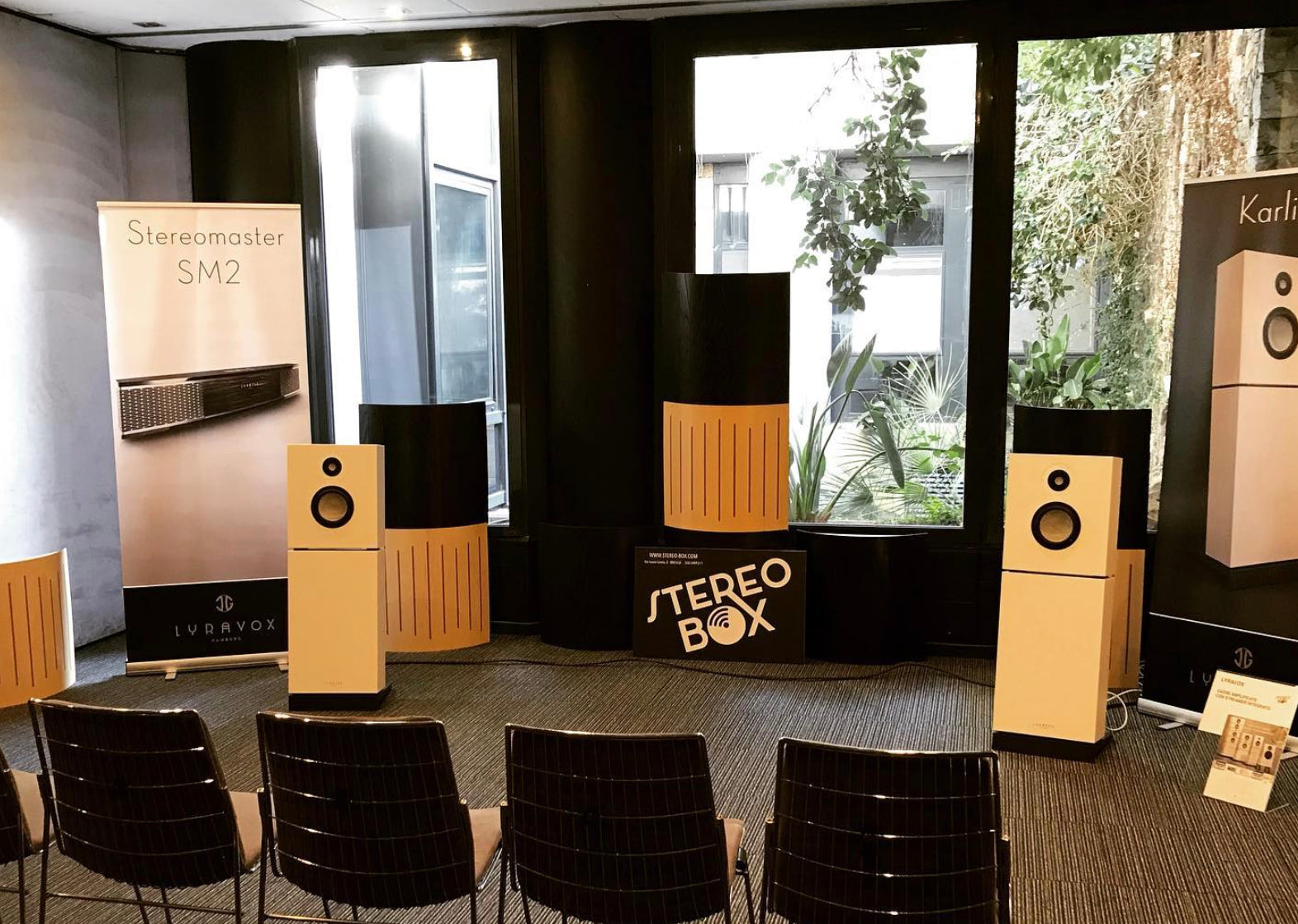
Leak
Leak SANDWICH 250 - Pair of speakers
A great invention for speakers
Throughout the history of broadcasting and recording, several remarkable developments have become milestones in the progress of sound reproduction.
One such milestone was the world's first low distortion amplifier: the famous original Leak Point One, in 1945. Another was the great pioneering breakthrough with the invention of the extraordinarily rigid Leak sandwich cone diaphragm, which was demonstrably of great strength and many times stiffer than all conventional cone shapes of the time.
To understand the impact of this innovation, it must be remembered that to achieve low distortion, the movement of a loudspeaker's diaphragm, or cone, should follow the waveform of signals applied to its voice coil as accurately as possible. The ability of the current to accurately follow these impulses depends on the lightness and stiffness of the cone. Many conventional cones - paper, impregnated cloth, plastic, aluminum, etc. - generally suffer from poor stiffness. This results in significantly larger areas of the cone vibrating in motion, uncontrolled by the voice coil. These uncontrolled emotions produce transit "hangovers," amplitude distortion (peaks and valleys in the frequency response), and intermodulation distortion (lack of clarity of spurious tones). These defects are inherent in almost all direct radiator loudspeaker systems using conventional cones, regardless of cost.
It is often not sufficiently appreciated how profound the influence of the speaker enclosure (the cabinet) is on the overall acoustic performance. Its design requires a high degree of electro-acoustic knowledge as does the design of the motor units themselves. The new Leak Sandwich cabinet benefits from 60 years of technological development since the original. The structure is made from a composition of MDF and composite panels, thus creating a second reference "sandwich", with the panels layered for optimum cabinet strength. While the new cabinet merges intelligent bracing with this "sandwich" of materials, it also retains a specific front-to-back bracing, with the distinctive countersunk screw visible on the rear, a famous feature of the original.
The technology in Leak audio devices features plenty of science and innovation, but the industrial design often
attracts favorable attention. Much like the warmly received Leak Stereo 130 and 230 integrated amplifier models, the new Leak Sandwich 150 and 250 speaker models maintain Leak’s understated, classic styling. Finished in a sumptuous walnut and real wood veneer, the cabinet is adorned with a matching aluminum trim insert and finished to the same exemplary standards as the driver finishes and cone materials. The decorative grille fabric was specifically chosen to match the classic Leak styling with specifications for maximum acoustic transparency.
The keen eye will also notice that the new Leak Sandwich 150 and 250 come in perfectly matched pairs with a “hand-crafted” array presentation. More than just industrial design traits, the meticulous positioning of each driver is considered to the nth degree, allowing for truly precise stereo soundstage projection.
With the Leak Sandwich 150 and 250, the high frequency driver has been developed, incorporating a damped rear chamber to absorb the output from the back of the dome. This innovation not only isolates the HF unit from the rest of the speaker, but has the added benefit of reducing the resonant frequency of the treble unit. Bringing the resonant frequency below the crossover region means that the audible spectrum of low, mid and high frequencies can be stitched together with an added dimension of detail and harmonics, eliminating the need to drastically adjust the high frequency definition. And this same stitching is driven by a first-rate crossover, developed over thousands of hours of listening, not just by simulation as is the trend in modern speaker design.
The Leak Sandwich 150 and 250 represent the pinnacle of innovation that began in 1961 with the original Leak Sandwich.
These technological advances are implemented with the utmost respect for tradition, as well as with the continuous aspiration to forge sound reproduction equipment of the highest quality, accessible to every demanding audiophile.
The Leak Sandwich 150 is available in a 2-way bookshelf speaker format with a combination of a 6.5" (170mm) 'Sandwich' low frequency driver and a 1.2" (30mm) coated fabric dome high frequency driver.
The Leak Sandwich 250 is a larger format 3-way bookshelf speaker featuring an 11" (280mm) low frequency "Sandwich" driver, a 4.25" (108mm) midrange "Sandwich" driver, and a 1.2" (30mm) fabric-wrapped dome high frequency driver. The Sandwich 250 is available with or without a custom matching stand, finished in a matching real wood veneer.
Characteristics
High frequencies
The isolated compartment for the HF unit prevents rear bass modulation and eliminates cavity residences.
A long, stiff voice coil, powerful magnets and compliant suspension ensure wide linear excursions of the specially designed HF unit.
Medium and low frequencies
The mid and bass units have a long voice coil, a powerful magnet and compliant suspensions to ensure long linear excursions.
The Sandwich cone is many times stiffer and no heavier than conventional cone materials. The scientifically developed diaphragm
free from coloration and resonance breakup. The specially shaped dome further strengthens the cone and eliminates interference effects.
Custom damper rolls provide a dual purpose
i) eliminate cavity residences and
ii) extend the bass response downwards by converting internal atmospheric pressure variations from adiabatic to isothermal
Cabinet
The airtight external cabinet is completely sealed with a specially designed rear port system. Both the 150 and 250 models feature dual ABS bass ports, with a precision flared design. The cabinet provides efficient air pressure equalization, without "puffing".
Specially developed with a “sandwich” construction and front-to-back bracing ensures “dead” cabinet walls, delivering deep, clear bass without “boxes”.
Finished with an exquisite hand-applied real wood veneer.
Both the die-cast frame and baffle hole are shaped and positioned to give a flat response while eliminating diffraction and cancellation effects.
Internal considerations
Custom damper rolls provide a dual purpose:
i) eliminate cavity residences and
ii) extend the bass response downwards by converting internal atmospheric pressure variations from adiabatic to isothermal.
Choose options

L'amore per la buona musica
Chi siamo
Abbiamo scelto questa attività per passione, e con passione la portiamo avanti. La nostra esperienza, nella riproduzione musicale, nonché in quella della musica dal vivo, ci guida costantemente nelle scelte che facciamo per quanto riguarda i prodotti che andiamo a selezionare per voi.
